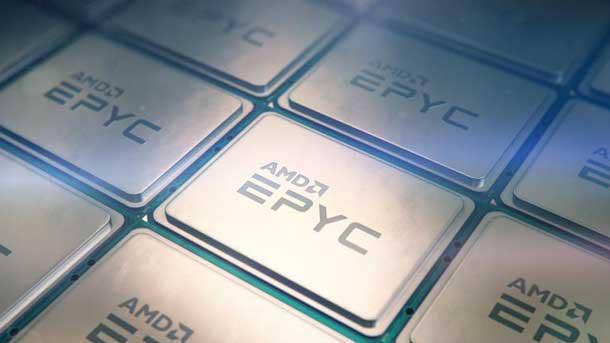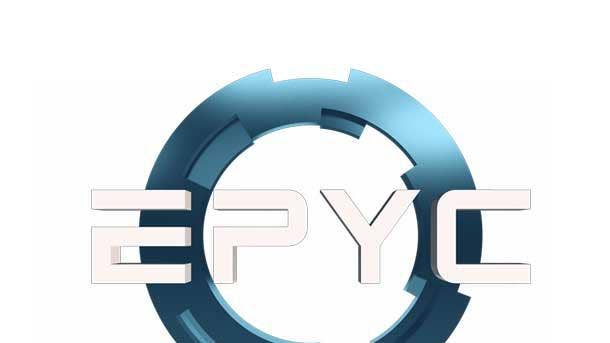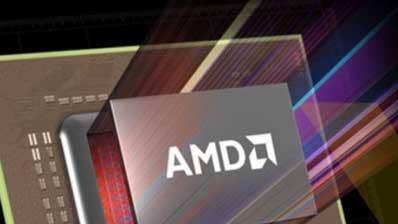Penguin Computing Exec: AMD EPYC Interest At 'All-Time High'
William Wu of Penguin Computing says the high-performance computing system builder is seeing an ‘all-time high’ in interest for servers running on AMD's EPYC processors, with many customers requesting quotes for AMD-based systems as a potential alternative to Intel-based systems.

William Wu Says It's Great To Give Customers More Options For Servers
An executive at Penguin Computing said the high-performance computing system builder is seeing an "all-time high" in interest for servers running on AMD's EPYC processors, with many customers requesting quotes for AMD-based systems as a potential alternative to Intel-based systems.
"Practically every single customer that we have when we're doing quotations, they are all looking for an AMD equivalency […], so the interest is at an all-time high," said William Wu, vice president of hardware products at Penguin Computing, based in Fremont, Calif. "And so we're very excited to see how many customers would actually make the change."
[Related: How AMD Plans To Win Over Solution Providers With EPYC 'Rome']
Penguin Computing, which also provides artificial intelligence and data center solutions, updated its AMD-based Atlus server platform in August with a new line of servers running on the chipmaker's second-generation EPYC Rome processors. The company is also selling the new processors, also known as the EPYC 7002 series, as a drop-in upgrade for existing Atlus servers.
"Ultimately, it's great to give customers an option to choose from as opposed to just always Intel over the last half decade," Wu, a seven-year company veteran said.
Founded in 1999, Penguin Computing, which partners with both AMD and Intel, provides Linux-based custom servers for high-performance computing and AI applications to large enterprise customers, including NASA, Caterpillar, Lockheed Martin and Boeing, according to the company's website.
The company's Atlus server refresh was announced in tandem with AMD's Aug. 7 launch of its EPYC Rome processors, which the chipmaker claims can provide a 25-50 percent lower total cost of ownership over Intel's Xeon Scalable processors, thanks to performance and price-performance advantages.
In an interview with CRN, Wu discussed EPYC Rome's potential impact on the data center market, how AMD's first-generation EPYC Naples processors prepared enterprises for Rome, what Penguin Computing is bringing to the table with its internal capabilities and why one particular feature in the new Rome processors could be a game-changer for certain workloads.
What follows is an edited transcript based on Wu's conversation with CRN.

What impact do you expect AMD's second-generation EPYC Rome to have?
Using their wording, it will transform the data center market. There's quite a lot of workloads AMD has put a lot of effort in optimizing onto this platform, so we're really excited to see how well AMD could play in those workloads that they've advertised that would really be accelerated compared to their competition, which is the Intel Xeon Scalable solutions. Ultimately, it's great to give customers an option to choose from as opposed to just always Intel over the last half decade.
How was adoption of AMD's first-generation EPYC, which is also known as Naples?
I wouldn't say it was great. It was more that everybody's really kicking the tires. It was [AMD's] first product in many years, and most of our customers, they weren't quite ready to replace their production environment with AMD, but they needed, almost every customer needed to get a mini cluster or a couple of systems just to see how their code will port over and see how it will work.
AMD wouldn't say this, but we felt that customers wanted to kick the tires a bit to get ready, so that if there was to be something great such as Rome, then they would have done all of the legwork within the Naples platform as opposed to the Rome platform. That's why Rome is so exciting right now, because a lot of customers have already done their due diligence on Naples. So that way Rome could immediately go into production as opposed to a dev environment.
Rome is socket compatible with Naples, correct?
That is correct. There are some feature sets that are only exclusive to a Rome platform. But companies like Penguin Computing, we've done a lot in high-speed digital design to make sure that some of the benefits of Rome could be applied into a Naples platform, specifically taking advantage of the DDR4 3200MHz memory. By design, it was not supposed to be supported unless on the Rome platform, but we have excellent engineers that really worked the digital signals, so that it could operate at that memory frequency.

How has demand been for Penguin's EPYC Rome-based servers?
The demand has been great. Practically every single customer that we have when we're doing quotations, they are all looking for an AMD equivalency for all quotations that we provide, so the interest is at an all-time high. And so we're very excited to see how many customers would actually make the change. There are a few accounts I'm not allowed to name that have already made the switch-over to AMD, and they are very, very happy with the results, so there will be more satisfied customers that would be excited with this switch-over to AMD.
What are the applications or use cases that are driving sales and interest?
On a high level, we have a joint go to market strategy with AMD to tackle oil and gas, artificial intelligence, software-defined storage and high-performance computing verticals. In those spaces, the specific workloads and applications for those four verticals are the ones that we are tackling.
To what extent are customers looking to replace existing systems or adding new capacity?
We definitely have customers that are looking to expand their current environment and they're adding AMD as well as looking to replace their existing environment with AMD. We see both scenarios.
What kind of questions do you have to answer when talking about switching from Intel- to AMD-based infrastructure?
Ultimately, the biggest question has always been cost-performance. That's always the easier part. We work really well with AMD so that a customer could see the value proposition of it. From the technical side, we have a group called the Advanced Solutions Group, headed by Kevin Tubbs. He works with our customer to talk about their specific workloads so that we give them some consultation on what exact pieces of AMD technology correlates with their workload to help accelerate it better than the competition, and that's part of our consultative AI practice, which is the Advanced Solutions Group.

How do you talk about customers about AMD versus Intel?
Intel is still very strong in many ways. At the end of the day, they have over a decade of resources invested into talking with the developers for specific applications and workloads. So AMD still has a lot of work to do to catch up with all of these [independent software vendors]. At the end of the day, the hardware does require software optimized for that hardware, and without that optimization, the numbers that were published cannot be met across every single workload. So it does require effort on AMD to continue doing that. If there are specific verticals and workloads that AMD hasn't yet started putting efforts into optimizing, then Intel as the incumbent would still maintain that market share.
How should Intel respond to AMD's new EPYC processors?
AMD's advantage is really time to market. Being the first with PCIe Gen 4, that allows AMD a window to bring in the existing Gen 4 market through the AMD platform. So by that, Intel definitely would not be able to go back in time and beat AMD to the market. They would just have to continue with working with their software developers to continue optimizing their code, so that when Gen 4 comes around for Intel, they would also be ready. They have to continue doing what they're doing with the software developers, so that when they do have a comparable technology, they haven't lost foothold. There's well over 90 percent of data centers still using Intel. It's going to take a while for AMD to make a dent into that for all of the verticals that Intel is in. So as long as Intel doesn't underestimate AMD, which I don't think they are, they're still a threat to AMD.

What advantages does PCIe 4.0 bring?
I have a perspective on [PCIe] Gen 3, which is: when Gen 3 came out, there were a lot of people that were really taking advantage of Gen 3. But then Gen 3 started becoming a bottleneck. I believe two years ago, people started optimizing their code to avoid Gen 3, and I cite the Nvidia NV Link [interconnect], where they're trying to keep the code, the data within the GPU itself, and any data that needs to go between the GPUs are transferred via the NV Link, without having to touch the PCIe Gen 3. I interpreted it as trying to avoid Gen 3.
So with Gen 4 coming out, I am interested to see, now that the bandwidth is much greater, can people do much better because they don't have to avoid Gen 3 anymore, to take advantage of Gen 4 and see how well that will impact the performance of their workload? So that's what's really exciting to me. I always felt that they avoided the PCIe, but now they don't have to. What kind of performance gains can be seen taking advantage of Gen 4?
There was a reason [Nvidia] came out with NV Link. It's because perhaps the Gen 3 was a bottleneck to Nvidia GPU performance, so they had to create a better interconnect called NV Link to improve that. Now with Gen 4 out, does it mean people don't have to avoid PCIe, and they can actually take advantage of PCIe to improve performance in addition to NV Link that Nvidia has. So that's what exciting to me. It felt like they were avoiding that bottleneck, but now that the bottleneck has been broken through, what can we see now in terms of performance? And that's what we're excited about.
When people were using NV Link, was that hindering communication between the GPU and CPU?
I would say yes and no. Before NV Link, the communication from GPU to CPU was via PCIe. As the CPU technology improves and GPU technology improves, it kind of created a bifurcation for what kind of code you want to use: CUDA-based or x86 based? Companies would have to say x86 is better, CUDA would be better, so it's that split between the two. It is dependent on the customer and what they felt was better for them: CUDA or x86.
Does PCIe 4.0 give an extra benefit for x86 code?
It's very workload and application-specific. Just look at the entire data center market. How much of that is CUDA and how much of that is x86-based? So with x86, Gen 4 will be very advantageous to them, but if it's more CUDA-based and they optimized the code to never leave the GPU domain and never go to the CPU, it will probably not provide a benefit. But because PCIe Gen 4 is out, the coders and developers are going to say, "OK, I'm curious to see now if I offload something over to CPU via Gen 4, what can I see now?" And that gives them a new knob to turn to try to improve their code.

What level of investment is AMD making in the channel?
That's difficult as a reseller, because I'm always going to say, "not enough." It's not that they aren't putting a lot of money in. I would say they are much more open to listening to what we believe is the best way to grow the channel market, and they have listened and written down everything from our vantage point on what needs to be done. And they've been pretty good at saying this is what we're doing today, this is what we can do tomorrow, and this is what we'd like to do in the near-distant future. And they are capturing what the channel is giving them feedback about, so it's not just a strategy that AMD has put together to tackle the market. They are actually being very collaborative with the channel to develop this channel strategy.
What's working on the channel side? What can be improved?
I think what is working is the collaborative nature of how they partner with the channel to take on opportunities. Almost all of the recent wins we've had with AMD could not have been done without AMD's support, with people going with our team to try to win the deals together, and I think customers like the idea of somebody like AMD trying to take care of customers. So I thought that was something they have done really well.
What they could be doing better is, I think they've already done a good job communicating what are the specific verticals that they are best equipped for, and there are verticals they are just ramping up resources to focus on. But there are instances where there are verticals where Penguin plays in that AMD hasn't put a lot of investment in, so it just means that that segment of the business will continue to be Intel, and we would love for AMD to continue investing in their own resources, so they can tackle all the verticals that we sell into. That would be the only negative, but I wouldn't blame them for that. You have to start somewhere, and it's only been a few years since they started getting back into the data center market.
What are those verticals where they haven't put much resources into?
I would rather not say.